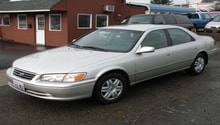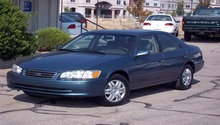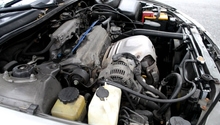Toyota Camry: Why Won't My Car Accelerate?
Your Camry is barely moving, even with the pedal pushed to the floor! What the heck just happened? Continue reading for a few places to start your diagnostic.
This article applies to the Toyota Camry 4th, 5th, and 6th generation (1997-Present).
There's nothing more distressing than seeing the dreaded "Check Engine" light illuminating on your dash cluster. Worse than that, stepping on your accelerator and getting almost no response from your Toyota Camry's engine only adds to the stress. But did you know that, in most cases, a fix is just a few steps away?
Let's take a look at the causes of this truly aggravating affliction on your otherwise hyper-dependable Camry!
Step 1 – Aim for the easy target first
In the good ol' days, your gas pedal was connected to a cable that ran directly to your carburetor linkage. Those days are gone. Now, your fuel-injected Toyota engine has a motorized, electronic accelerator that is controlled by your on-board computer.
Here's your first item to eliminate:
- Be sure your engine is off and your key isn't engaged.
- Dig out your owner's manual (Hint: It's in the glove box).
- Turn to the page that has the fuse box diagram and locate the Electronic Fuel Injection (EFI) fuse.
- Pull the throttle (EFI) fuse and inspect it. If it's blown, replace it and you have probably solved the problem. If it's not blown, read on.
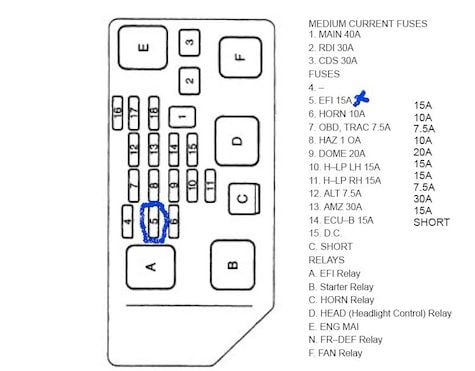
Pro Tip
Toyota is so cool: There should be a handy plastic fuse-puller tool and even some spare fuses attached to your fuse box cover.
Step 2 – The pedal position sensor may be worn
The throttles on the Camry 4-cylinder and the V6 work off a Pedal Position Sensor. This means the gas pedal is no longer connected to the fuel injection's throttle plate by a cable. The gas pedal actually has a position sensor. Think of the pedal as a small electric motor, which moves the throttle plate a certain amount to open or close the air intake butterfly.
If the throttle is pressed but you get no RPMs, your on-board computer has gone into "limp mode." The computer is giving the car just enough RPMs to get you safely home, to a dealership, or a local repair shop.

To check exactly what's putting your Camry into turtle mode, you'll need to get an OBD scan to read the OBD codes. Some auto parts stores will read them for you if they're not swamped with customers. Some auto parts outlets apply a small charge for this (AutoZone comes to mind). Call around to your local auto parts stores to see who can do this for you. It should be noted that sometimes the Check Engine Light may not come on, but "shadow codes" can still be triggered and stored in the car's memory.
OBD means on-board diagnostics, which refers to a vehicle's self-diagnostic and reporting capability. OBD scans gives you or a repair technician access to the status of the vehicle's subsystems.
Pro Tip
Naturally, your Toyota dealer can do an OBD scan, but be prepared to pay close to $100 for a diagnostic fee.
Step 3 – Have you checked your transmission fluid level?
You may just have a slipping transmission due to low trans fluid level! A Toyota transmission has a pump that circulates fluid to operate many of your transmission's internal components like valves, clutches, and brakes. Something as simple as a sticky valve may prevent the fluid from building up pressure.
- With the engine cool, pull back the locking tab on the (orange) dipstick and release the stick.
- Pull the dipstick and wipe it clean.
- Reinsert the stick all the way back into the fill tube.
- Remove the stick again and check the true fluid level.
- Add automatic transmission fluid in small increments until the dipstick indicates the trans fluid level is full.
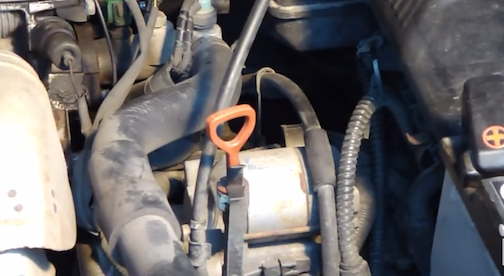
Figure 3. The transmission fluid has the orange handle. 
Figure 4. Check the fluid level.
Pro Tip
If the dipstick shows really dark, dirty fluid, you may want to have your fluid changed and the trans filter replaced.
Featured Video: Why Won't My Car Accelerate
Related Discussions
- Camry Won't Accelerate or Rev - CamryForums.com
- Car Won't Accelerate at First - CamryForums.com
- Car Revs, Won't Accelerate - CamryForums.com
- Noise While Accelerating - CamryForums.com


